If you are reading this blog it is probably because you think golf is a “good” sport. But what makes a sport “good”? Is it how fun it is to play? How interesting it is to watch? Golf has long been criticized as “bad” sport for reinforcing social hierarchies and utilizing environmentally irresponsible practices.
The Best Golf Movies: Trade in your putter for the remote
Can’t make it to the course today because of bad weather or a long day at work? Well, you can still experience the joy of golf without even putting on your golf shoes by enjoying one of these classic golf movies in the comfort of your own living room.
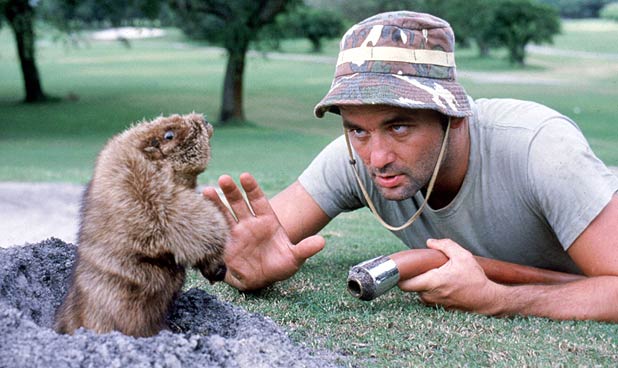
Caddyshack is a 1980s comedy starring Chevy Chase, Rodney Dangerfield, Ted Knight, Michael O’Keefe, and Bill Murray. The film takes place at an exclusive golf club, probably a little more eccentric than your own (depending if your groundskeeper has an unhealthy obsession with a gopher or not). Director Harold Ramis sinks a perfect hole in one with Caddyshack’s side-splitting, wacky humor. The film became a model for other teen comedies of the early 1980s and was followed up by a sequel Caddyshack II.
Tin Cup (1996) is a romantic comedy about a former golf pro (Kevin Costner) who attempts to revive his golf career, in order to qualify for the US Open and steal his rival’s girlfriend. Kevin Costner probably does such a great job depicting a golf-pro because the guy can actually golf! He is ranked number 39 in Golf Digest’s “Hollywood’s Top 100 Golfers.” Continue reading “The Best Golf Movies: Trade in your putter for the remote”
Bing Crosby’s golf bet with man with a mysterious past
Legendary crooner Bing Crosby may have had a voice that was unrivaled, but it was a different story on the golf course. Crosby was no match for golf hustler John “Mysterious” Montague, even when given the upper hand. In 1937, the pair faced off in a match, in which Montague played with an unconventional set of “clubs,” including a rake, a shovel, and a baseball bat.
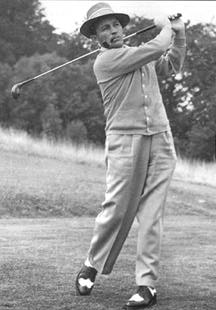
Montague was a happy and rotund man, who played golf and gambled with the celebrities of his day. He was the champion at Lakeside Club two years in a row, but he fervently dodged the limelight, hence his nickname. “Mysterious” Montague never discussed his past, career, and avoided getting his picture taken. On one occasion when he was likely to break the course record at Lakeside, he decided to bypass the last hole to escape the attention of the press.
Crosby, who was a five time champion at Lakeside himself, was amused when Montague suggested this off the wall bet. Bing and Montague agreed on a wager of $5 a hole, and Bing was confident that he would able to beat Montague’s equipment of junk with his seven-iron. The match ended when Montague hit the ball in with his rake for a birdie three. Continue reading “Bing Crosby’s golf bet with man with a mysterious past”
The History of Betting in Golf: Let’s make it a little more interesting
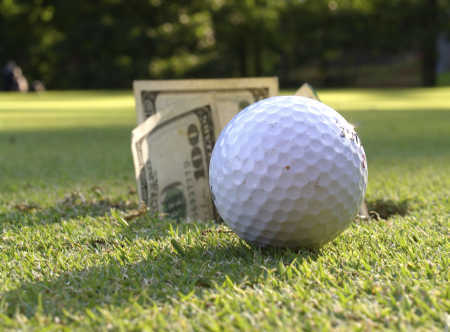
There is little that can better spice up a good golf game than waging a little bet with friends. Most of us keep it small and simple, betting a couple of bucks or a round of drinks. However, golf folklore is infamous for costly, outrageous, and just plain wacky bets.
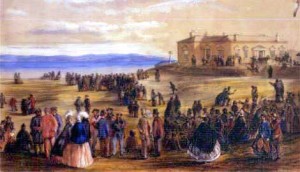
Have you ever bet that you could make a hole in fewer strokes than your partner? So did Sir David Moncreiffe and John Whyte-Melville in 1870, but they probably played with a little higher stakes than your average bet. The records of The Royal and Ancient Golf Club of St. Andrews report that the bet was literally life or death and the loser had to die. Although the records omit the outcome of the match, it is recorded that 13 years later, John Whyte-Melville gave a speech where he lamented “the causes that led to…” the death of Sir David Moncreiffe.
Such wagers in early Scottish golf were not uncommon, especially among the aristocratic class. Restrictions were even formally set by the Honourable Company in the mid-18th century to limit the amount one could bet on a game of golf, but were not followed as elite gentlemen continued to play for large sums.
In the early 20th century, golf bets became less extreme but far more unusual. There are stories of a man who bet he could win a game wearing a suit of armor, and another of a man who bet he could score under 90 in a dense fog.
There are also tales of golf debauchery in order to make sure a bet to swings in one’s favor. Infamous gambler, Titanic Thompson, bet that he could sink a hole in one 40 feet away. His poor opponent probably gawked in amazement as he made it in, unaware that Titanic payed a greenskeeper to lay a track straight to the hole. Don’t get any ideas!
More about Titanic Thompson, the man who could “sink” everybody.
Teeing off at the terminal

Finally, a solution to stressful and boring airport delays: a golf course at the terminal. Next time your business or vacation trip takes you through Hong Kong International Airport, stop by SkyCity Nine Eagles Golf Course, conveniently located outside one of the terminals. The nine-hole course has all the amenities of your country club back home, including floodlights at night and even a hole in the middle of a lake. Travelling light? You can rent everything you need to play a good game, like shoes, clubs, and caddies.
The Nine Eagles Course is a architectural feat. Not  only designed to challenge, built it was also built to be eco-friendly and beautiful. The course achieves USGA standard with its gently rolling hills and abundant bunkering. It is made up of seven Par 3 holes and two Par 4 holes fit for beginners, experts, and everybody in between. The clubhouse brings together what you would expect at your club at home, including a pro-shop and changing room, with a taste of Asia. Enjoy traditional Thai fare by eating outside to savor both the tastes and views of the East.
only designed to challenge, built it was also built to be eco-friendly and beautiful. The course achieves USGA standard with its gently rolling hills and abundant bunkering. It is made up of seven Par 3 holes and two Par 4 holes fit for beginners, experts, and everybody in between. The clubhouse brings together what you would expect at your club at home, including a pro-shop and changing room, with a taste of Asia. Enjoy traditional Thai fare by eating outside to savor both the tastes and views of the East.
Sold on this one of a kind travel experience? It’s affordable too. Playing Nine Holes (just enough time on a medium layover) will cost you US$50 on weekdays and US$70 on weekends.
Colf: What Golf looked like over 700 years ago
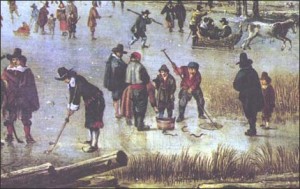
While a lot has been recorded about Scotland and the history of golf, but long before St. Andrews existed a more primitive form of golf emerged in present-day Netherlands and Flanders in the 13th century. Colf, as it was called, was played with wooden clubs and balls.
The game was not played on an actual course, but was played in the streets, churchyards, and open fields. However, this sometimes resulted in the breaking of windows and the hitting of innocent bystanders. When this became a major issue, the game was banned from the towns and relegated to open fields.
The rules of the game are largely unknown, but a lot can be garnered from dutch paintings of the time. It was probably a team game with one target. The target could be a tree, a post, or even a hole, and the goal was to reach it in the fewest number of strokes.
In the 16th and 17th century, the Little Ice Age forced colvers to play on small frozen bodies of water. The colf ice fields were very crowded, so the nature of the game evolved from a distance oriented game to a more target oriented one. The conditions of colf during this time required specialized equipment, like Scottish cleeks and leather balls.

The popularity of colf dropped off by the end of the 17th century, and it was replaced by a French game called, jeu de mail (a bit like indoor croquet), and the indoor game of kolf. Kolf was a hybrid of jeu de mail and colf, and it is still played in one region of the Netherlands today.
War Hero Becomes Golf Inspiration
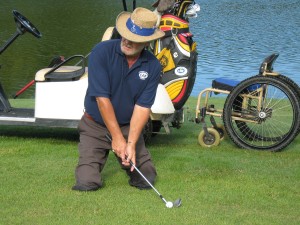 Mike Reeder, 63 years old, lost both of his legs in the Vietnam War. Instead of losing all hope after his accident which left him in a wheel chair, Reeder became an inspiration to golfers and non-golfers, alike. In 1988, eighteen years after his accident, Reeder found himself in a pro-shop and decided to pick up golfing. Since that day, Reeder has participated in amputee golf tournaments, both locally and nationally. He is an accomplished golfer, who has shot par, made a hole-in one, and has a golf handicap of less than ten.
Mike Reeder, 63 years old, lost both of his legs in the Vietnam War. Instead of losing all hope after his accident which left him in a wheel chair, Reeder became an inspiration to golfers and non-golfers, alike. In 1988, eighteen years after his accident, Reeder found himself in a pro-shop and decided to pick up golfing. Since that day, Reeder has participated in amputee golf tournaments, both locally and nationally. He is an accomplished golfer, who has shot par, made a hole-in one, and has a golf handicap of less than ten.
Due to his one of a kind story, the Challenged Athletes Foundation (CAF), which provides disabled individuals with opportunities to get involved with sports, granted Reeder the honor of being featured on ESPN’s E: 60. In July of this year, CAF funded Reeder’s dream of playing at the Old Course at St. Andrews in Scotland, making him the first handicapped golfer to play where golf originated. Continue reading “War Hero Becomes Golf Inspiration”
Golfer-in-Chief?
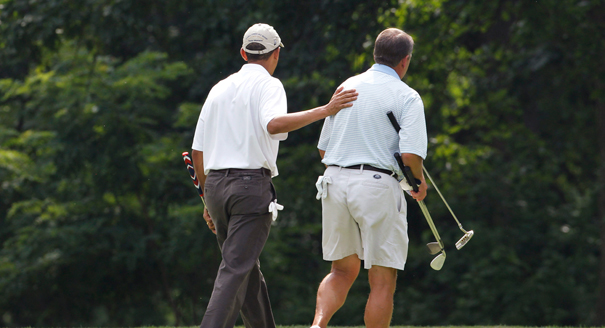
You might think that the busiest man in the country would not have time for a nice round of golf, but you would be mistaken. Ever since Taft’s presidency in 1909, all but three men in office have played golf. Mike Trostel, curator and historian at the USGA Museum in New Jersey, reports that many presidents have used golf to cope with the pressures of having one the most stressful jobs in the world. However, golf may be the name of the game, but politics is often the goal. Many commander-in-chiefs have also used golf as diplomacy, as being out on the course can alleviate the tension and conflict of more formal politics settings.
President Obama is no stranger to golf, even teaming up with his political opponents for the sake of the game. In June 2011, Obama teamed up with Speaker of the House, republican John Boehner. They played at Andrews Air Force Base in Maryland, against Vice President Joe Biden and Ohio Governor John Kasich.
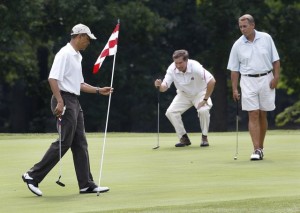 Unlikely victors, Obama and Boehner beat Biden and Kasich, winning them a whopping $2. Sign of the financial crisis—I don’t know. The scores of the players, like most important things in Washington, are “classified”. It is likely that Boehner, who is #43 on Golf Digest’s ranking of Washington’s top 150 golfers with a handicap of 8.6, outperformed his teammate. Obama is #108 on the list, with an estimated handicap of 17. The most noted golfer out of the bunch is Vice President Biden, who ranks far better than his boss at #29 with a 6.3 handicap.
Unlikely victors, Obama and Boehner beat Biden and Kasich, winning them a whopping $2. Sign of the financial crisis—I don’t know. The scores of the players, like most important things in Washington, are “classified”. It is likely that Boehner, who is #43 on Golf Digest’s ranking of Washington’s top 150 golfers with a handicap of 8.6, outperformed his teammate. Obama is #108 on the list, with an estimated handicap of 17. The most noted golfer out of the bunch is Vice President Biden, who ranks far better than his boss at #29 with a 6.3 handicap.
Maybe we can learn something from Golf Summit, as the game was later dubbed. Although a round of golf may not solve all our problems (or our country’s), it can create a better atmosphere for later conversation and dialogue.
Tiger’s Win at Chevron: What’s the hype all about?
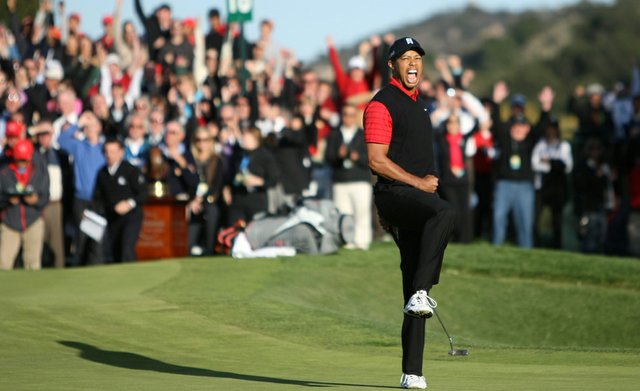
It seems like everyone is talking about Tiger Woods’ recent win at the Chevron World Challenge last Sunday and what it will mean for his career in the long run. Some people are calling this a “resurrection” of the old Tiger, banking on this one win to turn everything around for him after a disappointing two year streak which began shortly after the turmoil in his personal life.
The big names in golf are even talking about what Tiger’s return will mean for the game. Controversy erupted when No. 1 Luke Donald said that Woods was the best golfer he has every played against, but No. 2 Rory McIlory is the most naturally talented. A day later, Donald clarified his comment and tweeted that he meant no “disrespect” to Woods. Other golfers have welcomed Tiger’s comeback as a chance to face off with the golf champ, including McIlory. Continue reading “Tiger’s Win at Chevron: What’s the hype all about?”
